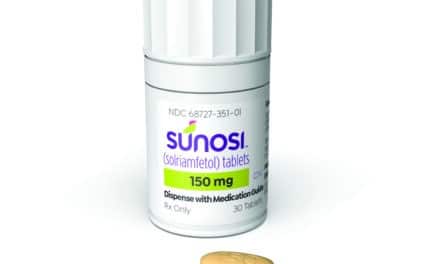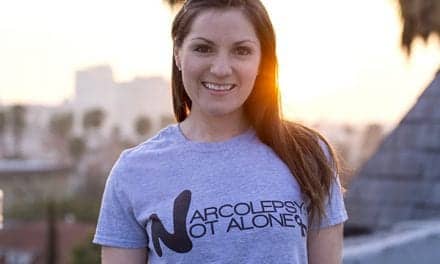The FDA says that Harmony Biosciences’ drug—previously approved for excessive daytime sleepiness in narcolepsy—works for cataplexy too. Harmony’s chief medical officer explains how this impacts healthcare practitioners and patients.
By Sree Roy
In August 2019, Harmony Biosciences Holdings Inc received two very different letters from the US Food and Drug Administration (FDA) about pitolisant, for which the company had submitted a new drug application for the treatment of narcolepsy. One stated that pitolisant—now better known as the prescription drug WAKIX—was approved for the treatment of excessive daytime sleepiness (EDS) in adult patients with narcolepsy. But the other stated the compound was not approved for the treatment of cataplexy in narcolepsy, citing statistical analysis deficiencies for this indication.
Because everyone with narcolepsy has excessive daytime sleepiness as a symptom, the EDS approval meant WAKIX could be considered as a potential therapy for all adults with narcolepsy. So this could have been a satisfying conclusion to the new drug application.
[RELATED: How Does Cataplexy Change Over Time?]
But Harmony “believed in the data” from its clinical trials, which also showed improvements in cataplexy, says Harmony’s chief medical officer Jeffrey Dayno, MD, and it wanted that indication in the label so narcolepsy patients for whom cataplexy is a significant symptom would have WAKIX as a therapeutic option.
“We persevered in trying to make the case—because having more treatment options for people living with narcolepsy is always a good thing,” Dayno says. “I think this effort demonstrates our commitment to the narcolepsy patient community.”
The technical deficiencies in the FDA’s complete response letter were about data analysis from the HARMONY 1 trial, where cataplexy was a secondary endpoint. Harmony and the FDA met in December 2019 to discuss the deficiencies that Harmony had responded to during the initial review by submitting a reanalysis of the data to address the agency’s concerns. “The FDA looked at the reanalysis; after their assessment, they did acknowledge that the HARMONY 1 cataplexy analysis was indeed positive and showed a statistically significant reduction in cataplexy—and supported the results of the HARMONY CTP trial, which was a positive trial,” Dayno says. The data showed about a 50% reduction in cataplexy in the WAKIX treatment group compared to placebo.
In October 2020, the FDA approved pitolisant for the treatment of cataplexy in adult patients with narcolepsy.
“With this expanded label, WAKIX is the first and only treatment approved by the FDA for both EDS and cataplexy that is not scheduled as a controlled substance,” Dayno says. This factors into the overall benefit-risk assessment when healthcare practitioners make a treatment decision for each narcolepsy patient. “Especially in patients in whom cataplexy is a significant symptom and causes a real impact on daily functioning, physicians can now consider WAKIX as an important treatment option,” Dayno says. “It may be seen as a stronger treatment option for some of those patients compared to having the EDS indication alone.”
The sodium content of narcolepsy drugs has been a topic of conversation lately. In response to a question about whether sodium content is a concern for WAKIX, Dayno advised that WAKIX’s active ingredient is pitolisant hydrochloride, which is “not a sodium salt, so sodium content is not an issue with WAKIX.”
WAKIX can be used as monotherapy or concomitantly with other treatments for narcolepsy. “There is data that has been generated with regard to drug-drug interaction, and there are no clinically significant drug-drug or pharmacokinetic interactions between WAKIX and either sodium oxybate or modafinil, which are two of the most commonly prescribed products in patients with narcolepsy,” Dayno says.
Dayno sums up the significance of the new approval: “The approval expands the label for WAKIX and broadens its overall clinical utility. Now it can be assessed as a treatment option in terms of either excessive daytime sleepiness and/or cataplexy. It’s the first and only treatment that’s FDA approved for both EDS and cataplexy that’s not scheduled as a controlled substance and is one that offers a favorable benefit-risk profile. We hope WAKIX can help even more people who are living with narcolepsy.”
Sree Roy is editor of Sleep Review.
Illustration 21771173 © Nasir1164 – Dreamstime.com





